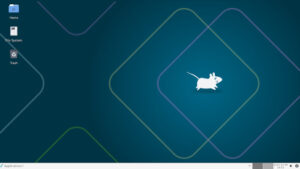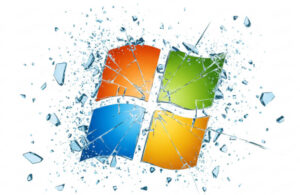The FOSS Force Quiz
Are you a distro hopper? Are you one of those people who knows what day of the week it is because of which distro you’re using? If so, this quiz is for you. But even if you’re one of those people who finds a distro you like and sticks with it until it becomes as comfortable as a well worn shoe, you’ve probably done your homework, and that’s why you were able to find the distro that was a perfect fit for you. In other words, you’ll probably do well on our quiz too — because it just might be a tortoise and hare sort of thing.
Anyway, now it’s time to test your knowledge in our FOSS Force Linux Distro Quiz. There are 18 questions about 18 distros and it’s pass/fail; either you make the grade or you don’t. 70 percent is the magic mark. Go over, and you’re off to study for your Linux certification. Go under, and it’s back to seventh grade for you. After you’re through you can check your answers. Each answer you get wrong will be underlined in red and all the right answers will be underlined in green.
And yes, this does count toward your final grade and will go on your permanent record. And no whining about questions being unclear. We’re the teachers. We’ll decide whether the questions are clear or not…
The FOSS Force Linux Distro Quiz

Results
You%20passed!%20You%5C’re%20on%20to%20do%20your%20desktop%20Linux%20post%20graduate%20work.
Close%20but%20no%20cigar.%20It%5C’s%20back%20to%20middle%20school%20for%20you.
#1. One of the oldest distros under constant development, this community distro has been used as the base of many other distros, inculding Ubuntu.
#2. One of the very first Linux distributions, this distro was the very first to offer a “live” CD version. The distro was active from 1992 until 1995.
#3. Primarily used in server implementations, this distro is considered to be a clone of RHEL.
#4. This popular Linux distro aims to be user friendly while being based on Arch Linux, which is considered somewhat difficult to master. Although based on Arch, the distro maintains its own repositories.
#5. One of the oldest distros in continuous development, this distro was started by Patrick Volkerding in 1993.
#6. Although this distro features some modifications to the kernel, it’s essentially a clone of RHEL.
#7. Primarily designed to be used with online applications, this distro developed by Google is mostly found on laptops and notebooks, and is not a traditional GNU/Linux “distro.”
#8. This KDE distro was initially based on Mandrake but very quickly developed away from those roots and is no longer seen as a Mandrake/Mandriva derivitive.
#9. In the early part of the 21st century, the company behind this distro discontinued it’s desktop distro to concentrate on its server distro. Several years later, it began offering this “community” desktop distro, partly as a testing ground for its commercial offering.
#10. This Brazillian based distro was begun in 1995. In addition to producing a Linux distribution, the organization developed a series of products and additional services, such as books, manuals, and even a Linux magazine.
#11. Born in 2001, this New York City based distro was derived from the Debian based Corel Linux and included proprietary software developed by the distro’s development company.
#12. This Ubuntu derived distro was started by Jeff Hoogland as a way of showcasing the Enlightenment desktop.
#13. Until it was sold in September 2002 to a Japanese company that chose to focus on Asian markets, this distro was one of the most well know distros in the West.
#14. This distro is the brainchild of Mark Shuttleworth and by default features the Unity desktop.
#15. This distro began as a Red Hat based distro and was started in France by Gaël Duval with the intention of creating a distro designed around ease-of-use.
#16. Designed primarily for penetration testing, ethical hacking and network security assessments, this distro recently went to a rolling release cycle.
#17. This distro was started in 1994 by Ransom Love and Bryan Sparks and was considered at the time to offer one of the best user experience. Development was stopped in 2003, after the company that was developing it, SCO, sued IBM over Unix code allegedly showing up in Linux.
#18. This Ubuntu derived distro consistantly holds the top spot on Distrowatch’s “Page Hit Ranking” and was conceived by Clement Lefebvre. The distro also offers a version derived directly from Debian.
We’re currently in the midst of our 2016 Indiegogo fundraising drive. Your support is crucial. Won’t you please visit our fundraising page and make a contribution to support FOSS Force?









10 of 18 with a couple that my second guess was the right one. Back to middle school with me!
I scored 13/18 or 72.22%. So, i passed!
16 out of 18, but it’s my bid’ness to know these things. I can’t gloat, but the two I missed were pretty touch. 11 and 13 if I remember correctly.
18/18! I had a couple of doubts too, but I got them right in the end (no googling, as that would take the fun ouf of these quizzes).
My struggle was with 7, 9, 11 and 14.
10/18 – I’m surprised I knew so much; Slackware is all that I’ll ever need.
18/18! I was a little unsure of a few, but clearly I need to get out more. I’ll blame it on the fact that it’s winter and there’s no baseball…